So interesting it is and so many good memories it brings back, especially thinking that Mazda hasn't associated "MPS" with a "six" since then, that we've decided to bring it to Pistonudos to star in this week's USPI. Let's go with it.
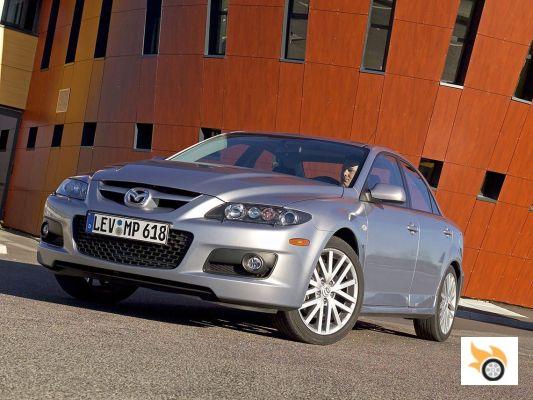
The 2002 Mazda6 was an excellent basis for creating a sports sedan, and the MPS proved it.
In 2002 was born the Mazda that was to change the fate of the Hiroshima firm in the European market, and also the rest of the planet. The Mazda6 was the first model born from the company's "Zoom zoom" philosophy of fun cars, which was in the doldrums.
The recipe for the new D-segment sedan was excellent from the ground up: A chassis developed entirely by Mazda (and from which Ford would take advantage for several of its own models), featuring a double wishbone suspension at the front and a multi-link at the rear, equipped with its own engines and solutions marked by the search for engineering excellence, rather than for "intangible" or cost reasons.
The result was "the best sedan on the market" in terms of performance and also in terms of response to the driver's commands. At least it was the best among the generalists, and if you put the premiums in the package, only the 3 Series of the time could overshadow it.
That's why, right from the start, testers began to salivate around the idea of a performance version that would take advantage of all the capabilities of this magnificent machine.
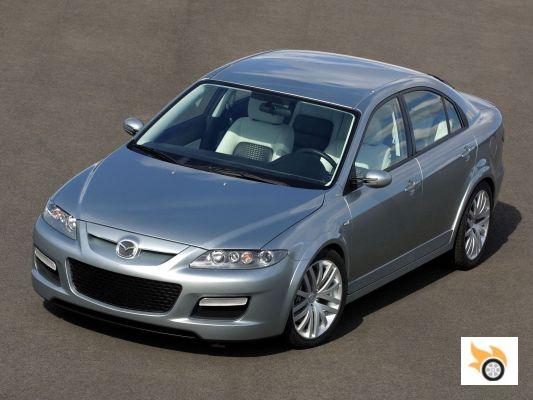
That same year of launch, and to give luster to the Mazda6 "GG" (for the chassis code), the Japanese firm already showed a concept, called Mazda6 MPS Concept, which advanced almost all the details that, four years later (we had to wait a long time, yes) we would end up seeing in the production model.
Technique and design
A reinforced chassis, a turbo engine with direct injection and an intelligent all-wheel drive system were the basis of this "six".
And it was in 2006 when it arrived at the dealerships, after two delays. It retained the same familiar suspension layout of its "conventional" siblings, but added new and interesting arguments. For starters, and in an unexpected way (not something manufacturers usually do), Mazda reinforced the monocoque with new spot welds and stiffeners to take torsional stiffness 50% higher, before seating the car on 25% stiffer springs at the front and 26% stiffer at the rear, accompanied by tighter dampers and thicker stabilisers. Silentblocks and ball joints were also obviously changed. The goal? The usual Mazda goal: to achieve a tremendously stiff monocoque so that the suspension can work at will without twisting it.
Between its front wheels, through and through, was a 2.3-litre inline four-cylinder, with turbocharger and direct injection plus an air-to-air exchanger that cooled the intake air after compressing it. All this technology was a real revolution at the time (think of it as the recipe book for a current engine), offering 260 hp and 380 Nm of maximum torque, with a very wide range of use (maximum torque was given at 3,000 turns, and maximum power at 5,500).
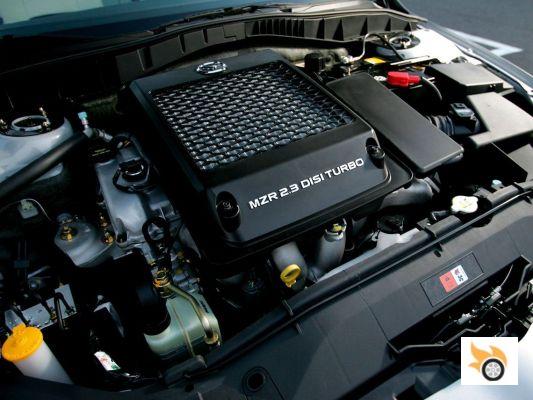
All the potential was fed to a six-speed manual gearbox, before directing the multiplied torque to all four wheels. For distribution it had a central differential formed by a multi-disc system, placed just in front of the rear differential. This center differential was able to send up to 50% of torque to the rear axle depending on what the "electronic brain of the car" dictated, which calculated the needs depending on the available traction and the selected driving mode (there was a sport mode to always have torque on the rear wheels).
In addition, the rear axle was complemented with a self-locking differential of helical gears (Torsen type), responsible for further improving the agility of the car.
Aesthetically the car barely sings next to a conventional Mazda6, despite all the technical changes. The bumpers were more wraparound, side skirts were included and the rear had its own identity with a functional diffuser and two separate exhaust tailpipes, one on each side.
As I said above, it's one of those cars that goes unnoticed... until you try it.
Inside
Opening the door brings you to a typical turn-of-the-century Mazda, with a simple gauge cluster (no lap counter or central speedometer here), a pop-up navigator in the center of the console, and circular air vents. In terms of materials, fit and ergonomics it was among the best in its class at the time, and although it doesn't have a spectacular design, today it's still a peaceful place to sit.
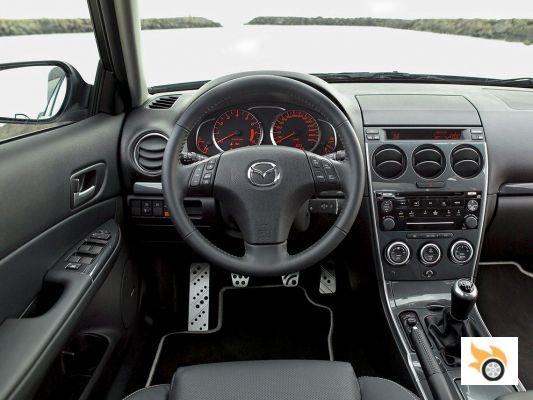
The front-row sport seats are supportive and supportive. The Bose stereo sounds great (and it was standard, although it "ate the CD's"). In the back row there's more than enough room for two passengers (and yes, it has Isofix), and the five hundred litre boot is enough for any family to be more than happy to move the whole house during their next holiday.
The only downside I can think of is the fact that it had single-zone climate control, and that, nowadays, is no longer fashionable. But this is a car designed 12 years ago, no less.
On the move
Turn the key in the ignition and start the car (no buttons). The four-cylinder comes to life in a very restrained way. Nothing foreshadows that you have so much muscle under your right foot. You press the clutch (which is hard) and select the gear (the gearbox is simply phenomenal, in terms of feel, travel and speed). Starting from a standstill without some small pull seems complicated, but you get used to it.
The engine is immediately muscular. From two thousand turns you have a lot of torque, and if you approach the three thousand of its maximum torque, you have almost a locomotive behind you. You feel it "fat", but at the same time progressive in its response. It doesn't kick in and forget about you, it accompanies you.
Driving in the street is no more complicated than with any other sedan. The extra hardness applied to the power steering makes life a little more complicated, but the suspension is just at that point "BMW style" of being hard, but not insufferable. In town it swallows potholes and speed bumps without complaint.
Consumption in this environment is perhaps the only problem, with figures that can go up to 15 liters if we walk stopping and leaving traffic lights. Besides, it only drinks 98 petrol... So cruising is not its best alternative.
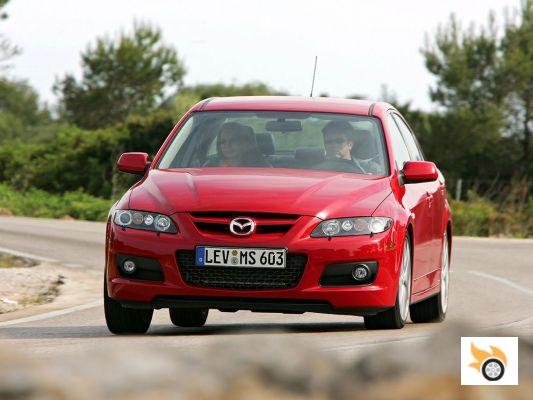
On the open road, and giving a little more relief to the engine, we find a car imperturbable in its lines, fast and with a reserve of power to make any overtaking that comes to mind. Think that this car was timed with a 0 to 100 in less than six seconds (below the official figure) and 80-120 in fourth of four seconds, which made it and a car faster than a BMW 330i of the time, by far.
The suspension here again proves masterful. While hard, it's not dry. It doesn't bounce or feel uncomfortable at any time, because it allows the wheels to maintain contact with the ground without shaking the occupants too much.
A long trip is comfortable, because the mechanical and rolling noise is not high, the Bose equipment fills well with musical notes the environment, and consumption here can be left in the nine liters per 100 kilometers.
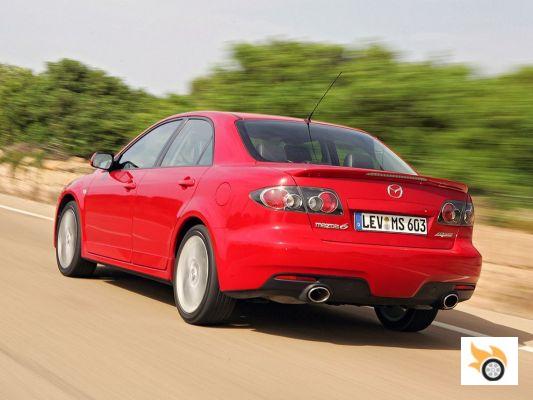
If we want to have fun, here we are again surprised in a positive way, although the MPS has to be driven the way it likes it.
If we start with a big head, delaying the entry to the curve and then pulling the steering wheel, the front end will end up opening, more the slower the road. You have to drive entering smoothly in these circumstances and playing with the throttle from mid-corner, because the rear will then play in our favor, and wink the trajectory with a very slight oversteer sensational.
If the road is unravelling and becoming faster, the car gains integers, because every time we will find less and less with the problem of understeer, and we will enjoy more of the traction capacity and the precision of tracing.
The steering is a delight by touch and information, although it has a central dead center somewhat elusive that in straights will make us "seek" more with the hands to take the car straight than we would like. It lacked some consistency in its amount of assistance in that sense.
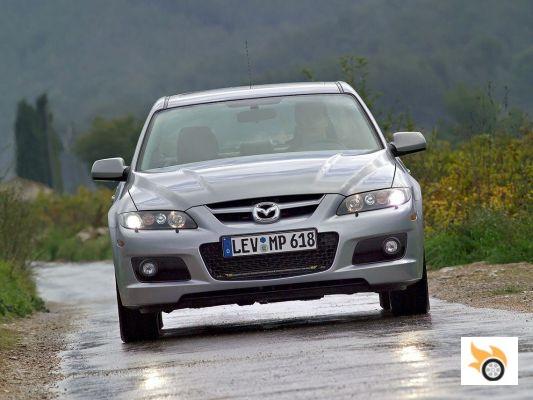
If you play your cards right you can round the corners for power with the rear opening up ever so slightly and a smile on your face.
The brakes are powerful and dosable, although they were soon fatigued if we overdid it. The suspension tuning allowed us to count on almost instantaneous and frank support, bump absorption capacity in full support without changes in the trajectory, and rear yaw capacity, not only by power, but also by hollowing out the throttle.
The engine stretches and pushes, although it runs out "early", and you have to upshift before six thousand turns to maintain thrust, which takes some of the fun out of it when compared to a fast-turning engine. The staggered gearing and the position of the pedals, perfect for heel-toe, allow you to get everything out of it.
Of course, at these rhythms, getting close to 20 litres of fuel consumption is not crazy...
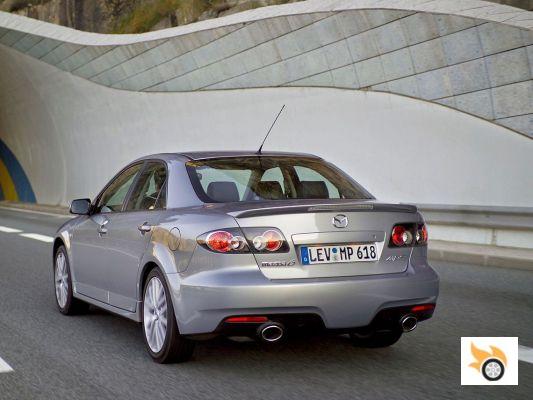
All in all, the 6 MPS was a tremendously agile, powerful, effective and fast sedan, without being radical. It was better than all its rivals at the time, but it wasn't fast enough to be considered an alternative to the M3 or S4 by its potential customers, who didn't even know about the (cheaper and more exclusive) Hiroshima model, which limited its reach in our market.
The good thing is that this has meant that its prices have not skyrocketed over time, and it remains a "pearl in sweet", especially suitable for those looking for a sedan "valid for everything" and capable of driving in adverse weather (thanks to its traction system), without being radical to the Impreza, or be boring to the Audi.
Things to watch and check
The six MPS is a reliable car as a rock, but it does have certain little problems that you should consider and review before putting your money on one of these cars.
- Oil leaks: At the gearbox output, towards the center differential, oil leaks used to occur on some units. Lifting the car on a lift and checking that the seals are OK is important.
- Engine: While the engine is tough, check that the turbocharger is not burning oil through the seals, a typical failure of any turbo engine that is detected, you know, by the smell of burning oil and bluish smoke coming out of the exhaust. Buying a unit with less than 100,000 km on it should ensure that the turbo still has plenty of life left in it.
- Engine mounts and silent blocks in general: These cars suffered, due to their drive system, from silent blocks in engine and suspension that deteriorated relatively quickly with "hard" use. Check that the car feels solid in acceleration-retention. If you "notice" that the engine or gearbox "move", those mounts would need to be replaced, and it's not exactly cheap to say the least.
- Clutch: Excessive pedal hardness and an imprecise feel in the bite were derived from a congenital defect of the first units delivered that was corrected through an internal campaign of the brand. If your car has the defect, it should be checked in the workshop.
- Audio system: The CD changer in these cars tends to get stuck, as it already happened in the Mazda3 and Mazda6, something that was never fully corrected. Check that the unit you're looking at isn't locked.
- Alignment: With such a sophisticated suspension layout, the Mazda6 MPS allowed you to adjust camber, camber and caster to suit your shop. But for that same reason, and because of the enormous torque involved, it was a car that tended to run out of true, and didn't always get back on track. Abnormal tyre wear is the first warning that the wheels are not looking where they should.
- Brakes: You have to check the condition of discs and pads, as it is a very demanding car with them.things to modify
It's not a car that needs modifications to improve, as what it offers is an exceptionally accomplished recipe, and any change would break its perfect balance of "everyday sports car for the whole family".
In any case, fitting stiffer engine mounts is a good idea if you're in for a change, as you'll save yourself the trouble of the stock ones deteriorating as quickly as they do.
Conclusions
If you're looking for a sporty, fast, all-weather sedan for £10,000 or less, I can't think of a better alternative than this 6 MPS.
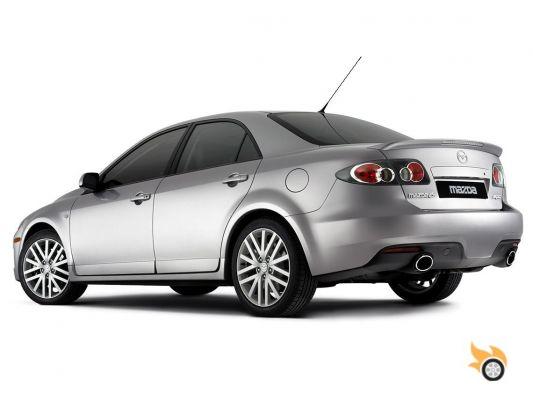
It is reliable, fast, unknown, effective and capable. Only the consumption can be a drawback
Yes, a 330i is rear and naturally aspirated and offers a different kind of driving pleasure, but the Mazda is cheaper to buy and maintain, offers the extra of being "4×4", and doesn't sacrifice driving fun or agility, although it's clearly not for "all-weather sideways" driving. Only the consumption (of broth 98) can be an excluding data, especially if you're going to put many kilometers, especially in the city (which is why there is not one in my house right now, by the way).
One of those "connoisseur" cars that will remain unnoticed for years to come.
Article originally published in December 2014, recovered for Pistonudos.
























